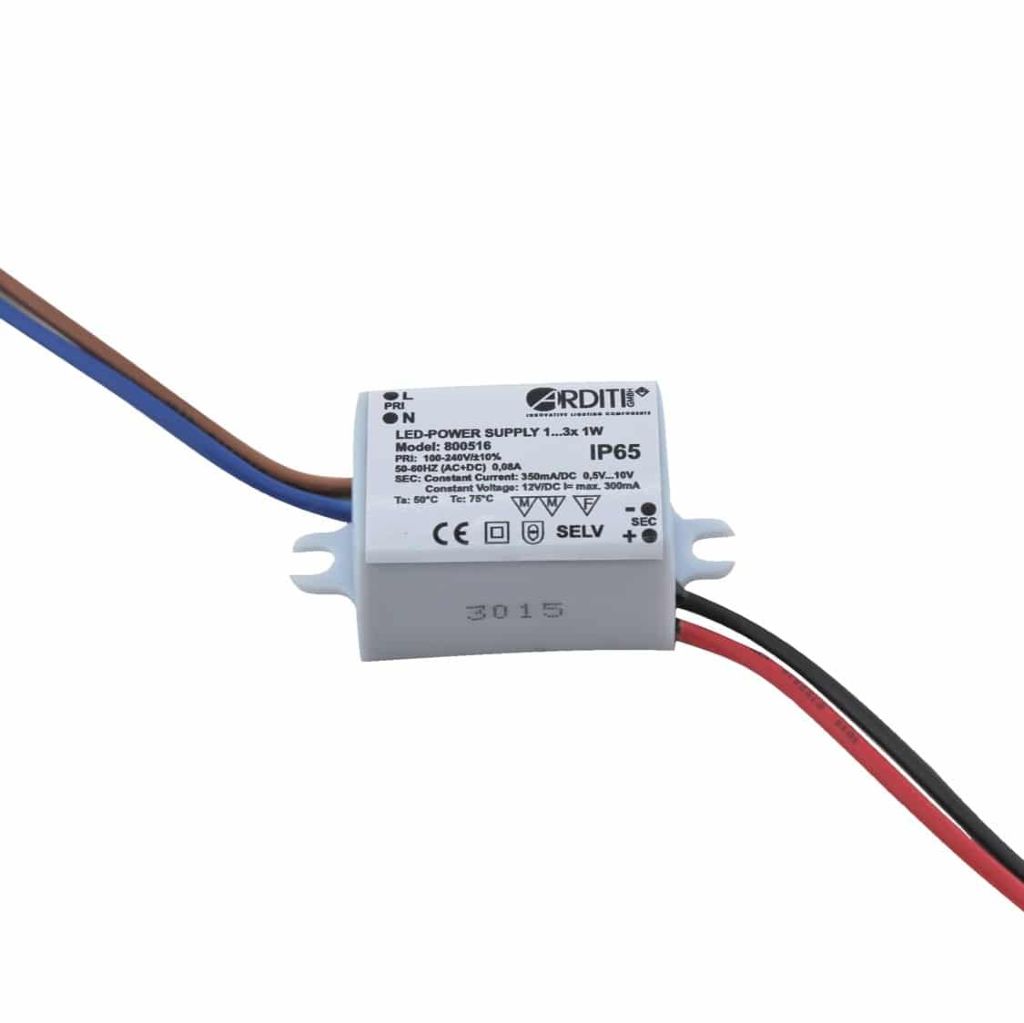Models of MeanWell LED Transformers Typ A, B relating to IP67, IP65.
The well-known and proven Meanwell HLG LED transformers can be set or dimmed in a variety of ways. These are described below.
This is indicated by the last letter of the product designation. (Marking "Z" in the example below: HLG-xxxH-yyZ)
An exception is the type without last letter after voltage specification (yy). This Meanwell power supply does not allow any adjustment, but offers IP 67 protection.
Type _ (z.B. HLG-240-12) - IP 67:
The "blank" type, i. e. without letter marking, only has a connection cable and no further setting options. This ensures especially IP67 i.e. this type offers the best protection against water, dust or dirt.
Type A (z.B. HLG-240-12A) - IP65:
Type A enables either constant current or constant voltage operation. This depends on the load and the setting via internal potentiometers, which are hidden behind small rubber covers for moisture protection.
- Constant voltage mode:
Using the Vo. ADJ. controller, the output voltage can be set in a range around the nominal secondary voltage according to the data sheet (data sheet information: Voltage Adj. Range):
This voltage is maintained as long as the maximum current is not exceeded. Then the power supply unit switches to constant current operation. - Constant current operation and works as a constant voltage source:
The regulator Io. ADJ is used to set the maximum operating current. The Meanwell HLG goes into current limiting and acts as a constant current source.
However, this only works if the connected load is sufficiently low impedance to the operating voltage. (Ohm s law), as is the case with LEDs.
Type B (e. g. HLG-185-12B) - IP67:
Type B was specifically designed for the dimming operation of LEDs or LED modules / LED lamps. The special feature is its different possibilities for dimming
In addition to the connection cables for mains input voltage (three-pole: green-yellow, brown, blue) and the output cable (red, black), the Meanwell HLG Type B also has a third connection cable with the colours (blue, white). This input enables dimming operation as described below.
- PWM (Pulse width modulation):
A 10V control signal is connected to the input, the pulse width ratio of which determines the output voltage of the power supply unit and thus the brightness of the connected LED lamps. (Attention: LED lamp must also be suitable for dimming operation).
For the provision of the PWM signal, there are different types of PWM signals. Products on the market which, for example, generate a PWM signal from leading edge dimming. Frequently, even so different. Control gear controlled in parallel.
Especially popular is the DAP-04 adapter from Meanwell, which functions as a DALI-PWM adapter and allows even the most powerful Meanwell transformers to be controlled via DALI.
The PWM ratio determines the output voltage as shown in the table below.:
Usual PWM frequency between 100Hz and 3kHz.
- 1-10V Signal:
If a variable voltage of an external source between 1 and 10V is applied to the input, the output voltage changes according to the table below:
Important: Potential separation between the output voltage and the control voltage.
- Potentiometer control:
If a potentiometer, adjustable resistance between 0 and 100KOhm, is connected, the output voltage can be assigned to the set resistance value as follows.
If several devices are operated in parallel, correspondingly lower resistance values must be used.
Type C (e.g. HLG-320-24C) - IP20:
Type C differs from Type A only in terms of connectivity. Instead of cables, the type C has a terminal block. This does not guarantee high IP protection. Currently not available at LEDclusive.de.





















